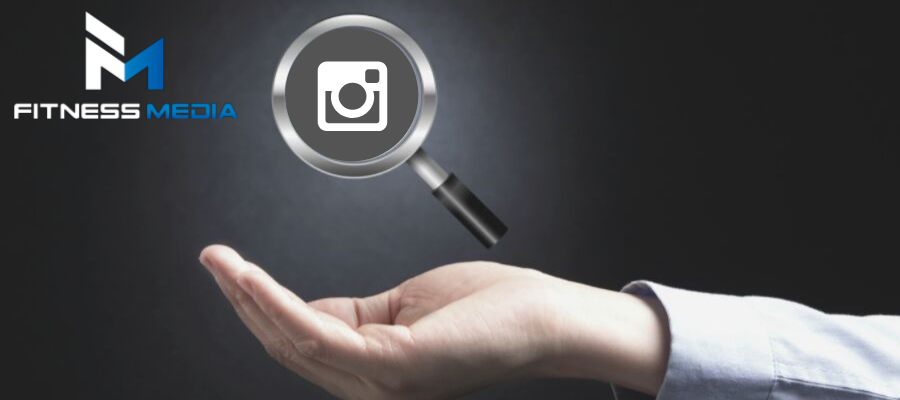
How To Utilize The Power Of An Instagram Influencer
July 4, 2019
Top 10 Influencer Marketing Trends
August 23, 2019Influencer marketing has grown so much in recent years that it has become an integral part of digital marketing. Since then, businesses are trying to figure out the best trends to include in their list of strategies.
Although influencer marketing has proven to be a very successful strategy, success cannot be guaranteed with just any influencer. If you are a business looking to ride the influencer wave, you’ll need to do your research to ensure that you find the right influencer, plan a great campaign, and create and maintain a marketing strategy with specific goals in mind.
Here are the top five influencer marketing trends to keep an eye on:
1. Heavy Focus on Instagram Influencers
Instagram has quickly become to go-to platform for influencers. Snapchat’s massive user decline has made the platform a lot less appealing to marketers. Instagram, on the other had, reported 1 billion monthly active users as of June 2018 and is the second-most engaged social platform, meaning its users are not only viewing content, but interacting with it.
Instagram has become the primary platform for influencer marketing
Features such as IGTV and Instagram stories have made it an all-in-one platform. It also offers a variety of features for brands and influencers to collaborate better. One example is the paid post feature.
With all of these features combined, influencers are able to share more of their lives with their followers. Therefore, there is a stronger relationship and connection between them and their audience. This connection makes it easier for influencers to weave marketing into their content and to get better results because their audience has come to trust their opinions and recommendations.
For example, if an influencer shares their daily workout, simply having them wear your brand’s apparel could greatly increase your exposure because their fans are likely to take notice and trust that if the influencer likes the brand, it’s worth checking out. Of course, your tactics should always be linked to a marketing strategy with specific goals in mind such as brand awareness or increased sales.
2. Rise of Influencer-Owned Businesses
Influencers are learning how they can use their power and influence not just to help established brands, but also to create a brand for themselves.
Young Moguls
One of the best examples is how social media star Kylie Jenner leveraged her followers and transformed herself into a beauty mogul. At only 21 years old, she was able to become a young billionaire.
However, it’s not just Jenner who was able to create her own highly profitable brand. Every day, more of these influencers are learning how to use their influence to go beyond the usual affiliate marketing and brand-sponsored posts.
Business and Influencer Partnership
Influencers are not the only ones benefitting from this trend. Lesser-known businesses and startup brands are presented with a new opportunity to be known to the public. Businesses are realizing that brand awareness campaigns that focus more on exposure than direct sales can be highly beneficial to their overall brand and company.
An influencer who decides to create and build their own products will not automatically turn to the biggest and most popular manufacturer. Instead, this influencer would seek out small businesses who can do planning and production for a smaller price. In return, the business gets work while also gaining the potential for brand exposure.
What Can Businesses Do
For businesses to take advantage of this, you’ll have to make yourself known to influencers first. Start by reaching out to influencer’s in the same niche as you. Reach out to them about the possibility of working to create a new product under their name. This might even inspire them to finally begin building their own brand. For example, if you are creating workout leggings with fun patterns, you might reach out to a fitness influencer and discuss having them design their own pattern which would be branded as their own personal design.
By attaching the influencer’s name to the product, you form a partnership. Since their name is on the line, they will be more motivated to promote the product and your brand as a whole. Consider this, in this example, the influencer may only be actively promoting their design, but your business would benefit from the increased exposure and website traffic, which will likely result in increased sales.
3. Partnerships with Unconventional Influencers
We all have seen a viral post, photo, or video online. Unexpectedly, a single viral video can make that person an unconventional influencer. As long as the post is not sending a negative or inappropriate message, the person in that viral post can become an instant celebrity. Or in this case, an influencer.
The World of Mukbang
One of the best examples of this is the rise of food eating shows, better known as the Mukbang. Originating in South Korea, these videos are simply people sitting down, usually in front of a single-camera setup, eating an unusually large meal, sometimes while chating with the viewers. The most popular ones often include only ASMR sounds as the highlight.
The people behind these Mukbang videos often receive offers from food businesses to try out their food during their next video. While most of these videos were probably created for entertainment purposes, they have become an avenue for brand exposure.
What This Means For Businesses
Other examples of these unconventional influencers include popular Instagram accounts such as the puppy Jiffpom, photographer Murad Osmann, gymnast Katelyn Ohashi, and makeup and beauty guru Bretman Rock. All of these people have lovingly shared their lives and have been able to connect with their audience. They were able to capture their hearts and inspire brands to work with them.
Stay observant and always be on the lookout for opportunities to partner and potentially work with an unexpected influencer. You can check out this guide on using influencer marketing to promote your business for more information.
4. Micro Influencers
Sometimes it seems like anyone can be influencer. With lots of influencers out there, it will help you a lot to understand the different groups you can work with. Micro influencers have a relatively small follower count, but still have the potential for persuasion and exposure.
Quality Over Quantity
As we mentioned before, large numbers of followers don’t always guarantee the effectiveness of influencer marketing. When working with influencers, it’s important to look for quality over quantity. Lower follower counts should not necessarily be a deal breaker.
Micro-influencers often focus on more targeted content in specific area of interest. The audience may be smaller, but they could also be more dedicated to that area of interest, and thus more ready to make purchase decisions.
Better Brand Engagement
There are many reasons behind the success of micro influencers. Influencers with millions of followers are usually followed for many different reasons. Some might follow this person for their diet and workout tips. Others follow to see their travels and the rest might be interested in that person’s fashion and beauty tips.
So, if this influencer promotes your workout leggings, only the portion of the audience interested in diet and workout tips are likely to engage with the content. You may be reaching millions of followers, but only a subsection of them are likely to be interested in your offer.
On the other hand, a micro influencer has likely captured the genuine interest of their followers by doing only one thing. Golf coach Colin McCarthy is a good example. As he shares mainly golf-related content, golfing brands are more motivated to work with him because they have a higher likelihood of engaging the grand majority of his large follower count.
Working with a micro influencer can give you 85% higher engagement from 1,000 followers compared to what an influencer with 100,000 followers can provide.
5. Getting User-Generated Content
Influencer marketing is not just about influencers alone anymore. Today, anyone can create that power to influence and help brands stand out and get known by users online. However, not all will be interested in becoming full-time influencers.

With that said, another branch of influencer marketing is created in the form of user-generated content(UGC). Brands are learning how powerful UGC is and learning more about its ability to influence’ consumers online.
The reason lies in what influencer marketing is all about. The power to create real and engaging user experiences, relationships, and connections between the brand and the users. UGC is a great way to create an influencer marketing strategy without spending thousands of dollars on producing the content.
True Brand Advocates: The Consumers
Word-of-mouth has always been an important aspect of any marketing strategy. While you cannot completely implement word of mouth on your own, there are definitely a lot of ways to inspire people to talk about your brand.
In a 2017 Consumer Content Report, it was revealed that 86% of consumers value authenticity. User-generated content is authentic and credible content you can use to market and promote your products or services. All you have to do is know how you can encourage your current customers to be enthusiastic about sharing what they love about your products. You can also align your brand’s message with what your customers love about you.
One good example is how GoPro uses their user’s own photos and videos to show the actual results of their cameras. It’s real, raw, and unbiased. On a much smaller scale, you can generate user content by compensating them to do so.
Start small by running polls, asking questions, and starting discussions. It will even help you understand your audience more. Give them special discounts or offers in exchange for sharing a bit of their experience with your brand. With the right channels, you can foster user-generated content to increase business exposure and drive continuous engagement.
Influencer Marketing with Fitness Media
The success of influencer marketing points to its ability to use creativity in creating real-life connections. With the help of individuals and their quality networks, they bring even small and little-known brands to the rest of the world. Fitness Media has the team and expertise to understand what your business needs. We help can use these influencer marketing trends to promote your business in the fitness industry. Contact us to discuss your goals!


